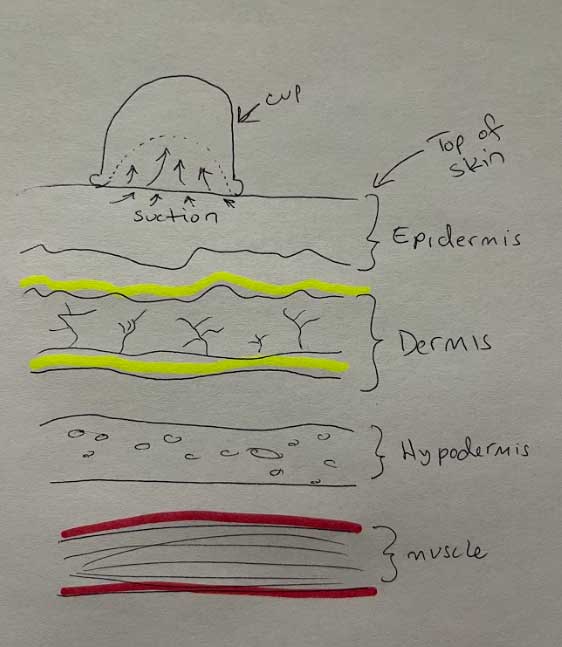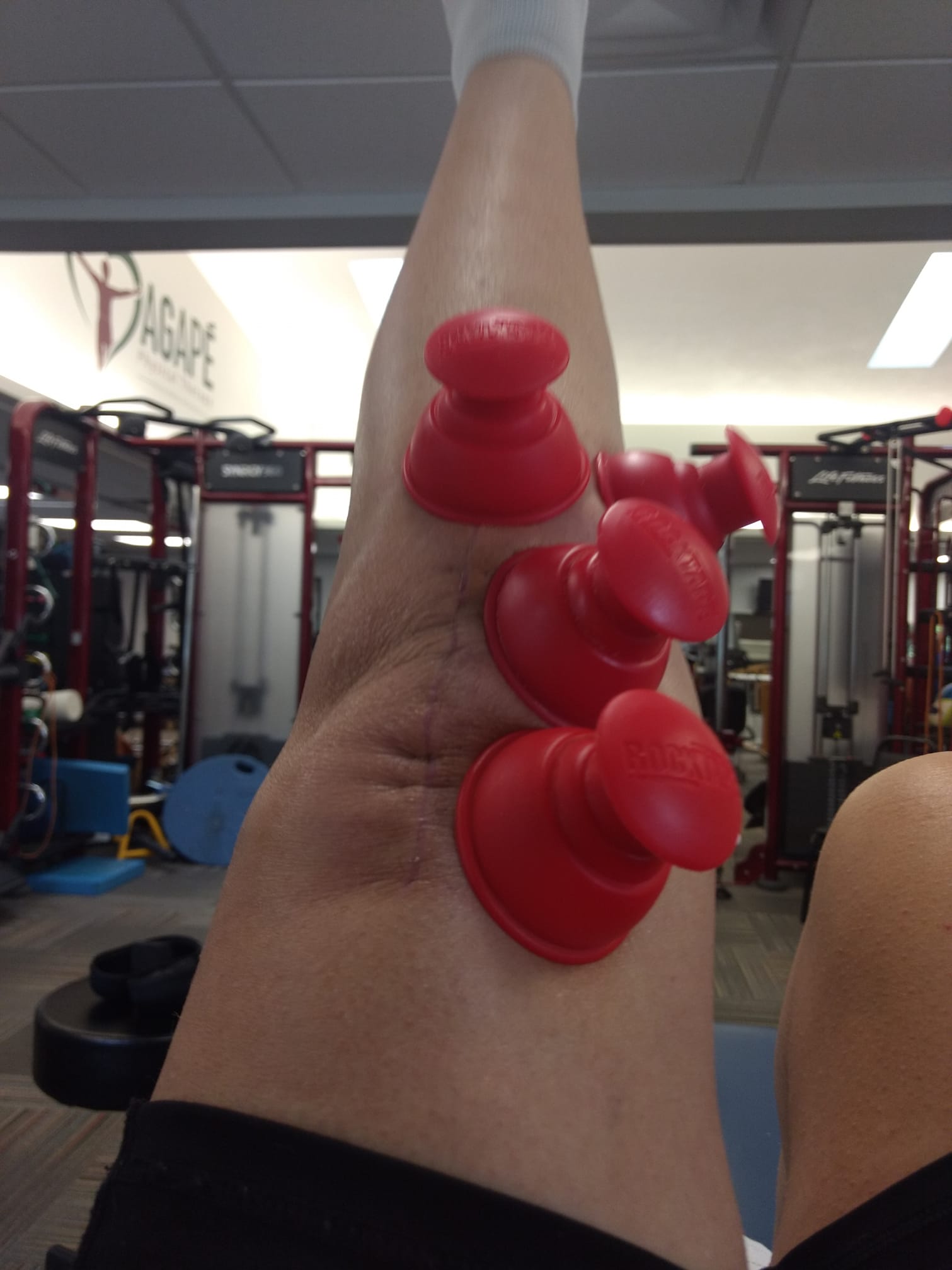Cupping Therapy After Total Knee Replacement
Although the risk of major medical complications attributed to cupping therapy is low, the efficacy of cupping therapy is poorly associated with post surgical care and total knee replacement scar tissue mobilization.
Cupping Therapy Research
As of March 21, 2022 a PubMed search for “cupping therapy and scar tissue” produced 3 results.
One of the three search results was an article case study in which a 36-year-old female developed keloid scars around the area where the therapeutic cup made contact with the skin. [1]
Unfortunately, most of the clinical research on therapeutic cupping is either not specific to scar tissue or is of such poor quality that it is not peer reviewed and subjected to unbias scrutiny.
Cupping Therapy And Total Knee Replacement
In my clinic, Total Therapy Solutions I am not opposed to using interventions that have little or no peer reviewed research to support them as long as there is reasonable expectation that the risk of injury is low.
In the video below I review the use of cupping therapy on a post surgical incision following a total knee replacement and what benefit may be realized while use it.
Best Cups for Therapeutic Cupping
Easiest to Use
These silicone cups are easy to use, easy to clean, and extremely inexpensive. I use these in the clinic for both dry cupping and therapeutic cupping with lotion. Since there are no moving parts they can never break or malfunction.
Therapeutic Cupping Set
I have also used this hard plastic cupping set with hand pump. This set works great and can generate higher vacuum forces, but with that comes the risk of capillary rupture, bruising, and bleeding.
I would not recommend the following set for home use unless you have been specifically trained in using a cupping set.
Does Cupping Help Arthrofibrosis
In the image below you can see a very crude illustration of cupping therapy and its affect on the most superficial layer of skin.
In a comprehensive review of clinical literature on therapeutic cupping, 135 RCT were identified and no difinitive evidence was found to suggest therapeutic cupping will influence tissue below the epidermis layer of skin. [2]
Since arthrodesis “is a fibrotic joint disorder characterised by excessive collagen production and adhesions that result in restricted joint motion and pain”[3] therapeutic cupping can not impact the deep layers of connective tissue associated with this collagen production.


Below are some comments from our Facebook Group Members:
I had cupping thanks to your recommendation for what felt and acted like the skin sticking just below the knee on the incision. She used cupping and after 3 times the skin is now pliable and doesn’t burn/ripping feeling anymore

Summary
Dispite having little or no clinical evidence to support its efficacy, therapeutic cupping carries relatively low risk of injury and is an easy to use, inexpensive home treatment for sensitized incisions, skin restrictions, and other superficial complications related to total knee replacement surgery.
* Consult your surgeon or physical therapist before trying any treatment intervention at home.
References:

Anthony Maritato, PT
Physical Therapist
Anthony Maritato, PT has been a licensed physical therapist and private practice owner since 2006. Ohio license #PT011602.
Anthony has been passionate about helping patients recover from total knee replacement surgery as well as rotator cuff repair surgery.
Table of Contents: